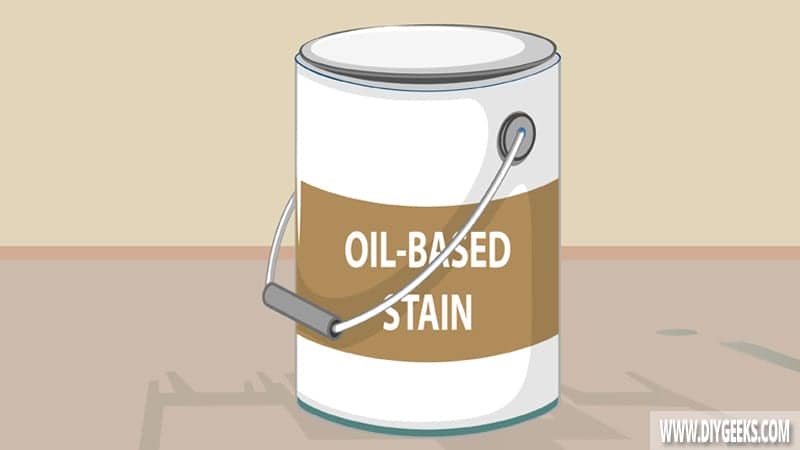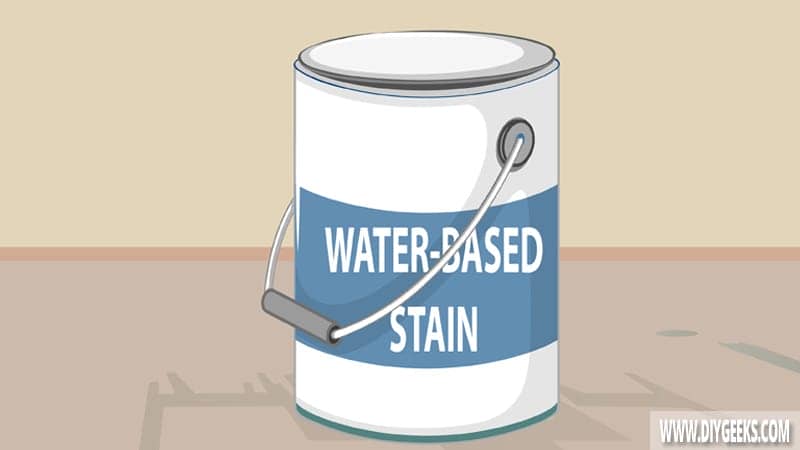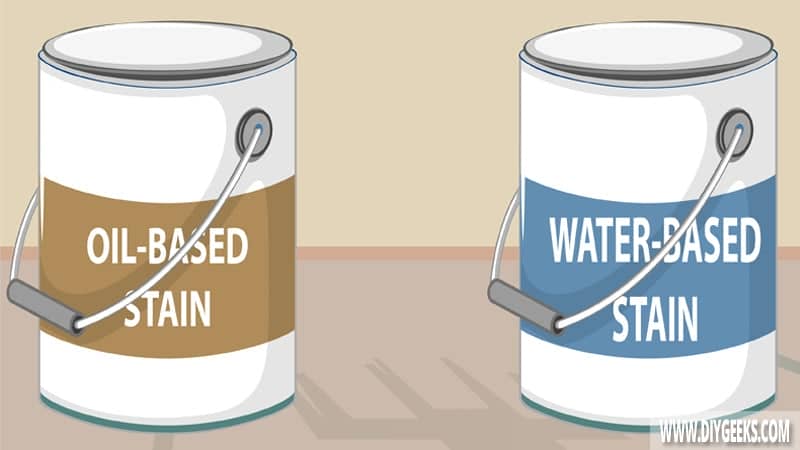Oil-based and water-based wood stains are penetrating finishes that use oil or water as their main solvent. The difference in solvent makes both stains have different finish types, drying times, and features.
The oil-based wood stain has better scratch resistance, durability, water resistance, and is easier to clean than water-based wood stain. Water-based wood stain dries faster, costs less, and is easier to apply than oil-based wood stain.
What is an Oil-Based Stain?

Oil-based wood stain is a penetrating finish that uses synthetic or natural oil as its main solvent or carrier. It creates an amber-like glossy finish that highlights the surface texture and patterns.
Oil-based stains a harder or rigid finish as it dries slowly, so the particles have more time to cure and harden, helping the finish become super hard. They also have a glossy finish.
The stain is used on furniture and floors that experience heavy usage, foot traffic, and weight because it can handle the extra weight and tension. It is known to seep deeply into wood grain giving the finish improved adhesion.
You can use oil-based stains for the following things.
- For outdoor use.
- If you want to switch dark colors.
- To fill and cover holes and cracks (A paint primer is better).
- For protection and durability.
- To prevent damage to wood.
What is a Water-Based Stain?

Water-based wood stain is a penetrating finish that uses water as its main solvent or carrier. Since it uses water as its solvent, the stain dries and cures faster.
You can apply water-based wood stain with a paintbrush or spray gun as it has a thinner viscosity that doesn’t require thinning. It creates a dry and textured finish that reveals the wood grain and texture.
You can use water-based stains for the following things.
- For indoor surfaces.
- For a light coat.
- As a base coat.
- As wood décor and other surfaces that wouldn’t experience much use or tension.
- If you want to apply multiple coats. The thin nature of the stain means you can apply more coats.
Oil-based vs Water-based Wood Stain
The differences between oil-based and water-based wood stains are listed below.
Solvent
Oil-based wood stain uses synthetic or natural oil as its solvent, while water-based wood stain uses water. The difference in solvents gives both stains a different finish type, dry time, and features.
Dry Time
Water-based wood stain dries faster than oil-based wood stain because its solvent (water) evaporates faster. For the wood stain to dry, the solvent (oil or water) must evaporate and the coating must become hard or rigid.
Water-based wood stain takes less than 1 hour to dry while oil-based wood stain takes around 1 hour to dry between coats.
Scratch Resistance
Oil-based wood stain is more scratch-resistant than water-based wood stain because it has a more glossy finish that prevents scratches. Water-based wood stain has a dry textured finish that is easily scratched.
Durability
Oil-based wood stain is more durable and lasts longer than water-based wood stain because it has a glossy finish, takes longer to dry, and is formulated with protective additives.
Finish Type
Oil-based wood stain creates a glossy finish because it’s formulated with high oil amounts. Water-based wood stain create a dry colorful and textured finish.
Water-Resistance
Oil-based wood stain is more water resistant than water-based wood stain because it has a glossy finish that repels moisture better.
Interior or Exterior Usage
Water-based and oil-based wood stains are more suited for interior surfaces as they have low durability compared to exterior paints or sealers.
Cleaning and Maintenance
Oil-based wood stain is easier to clean as has a glossy finish that repels dirt, dust, and stains better.
The Cost
Water-based stains are cheaper than oil-based stains
Application
Water-based wood stain is easier to apply than oil-based wood stain as it has a thinner viscosity and dries faster.


